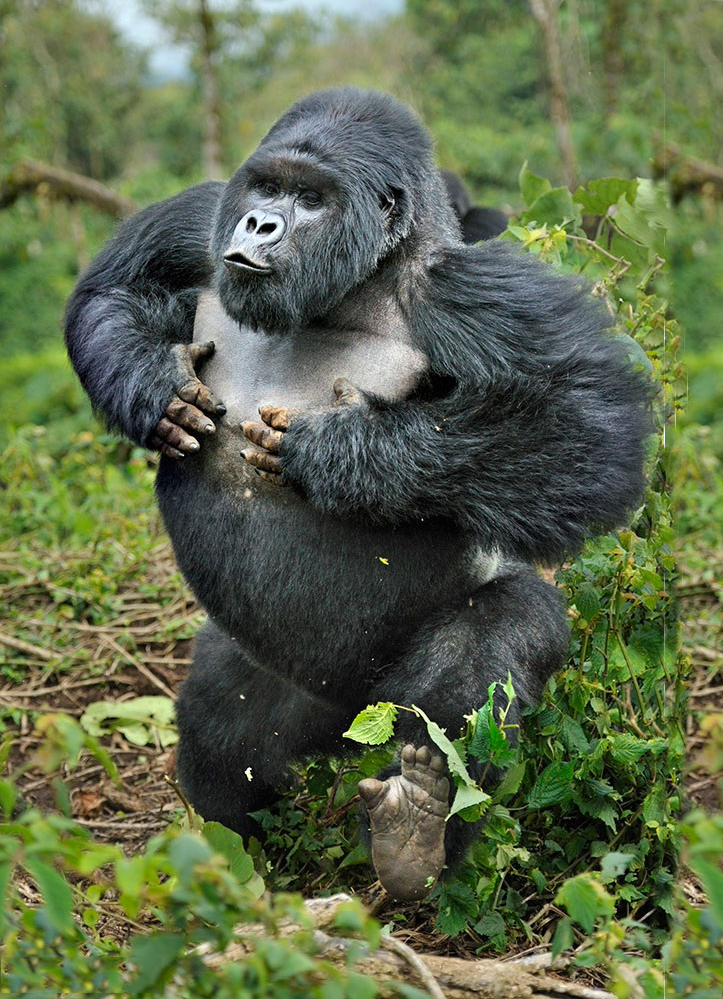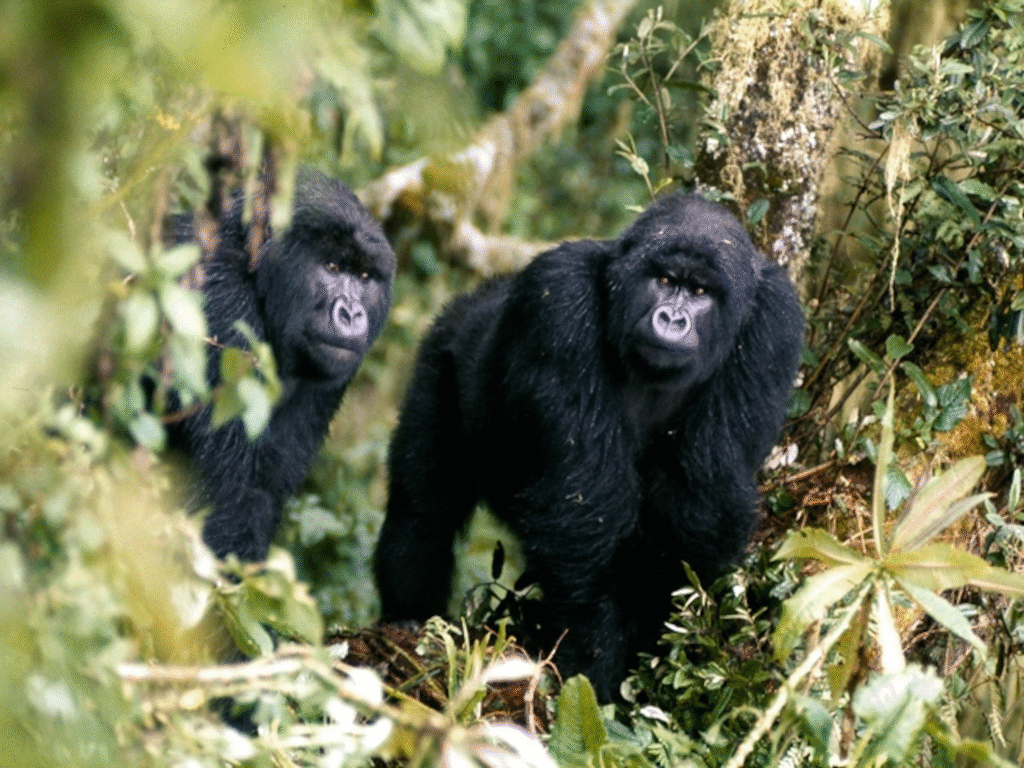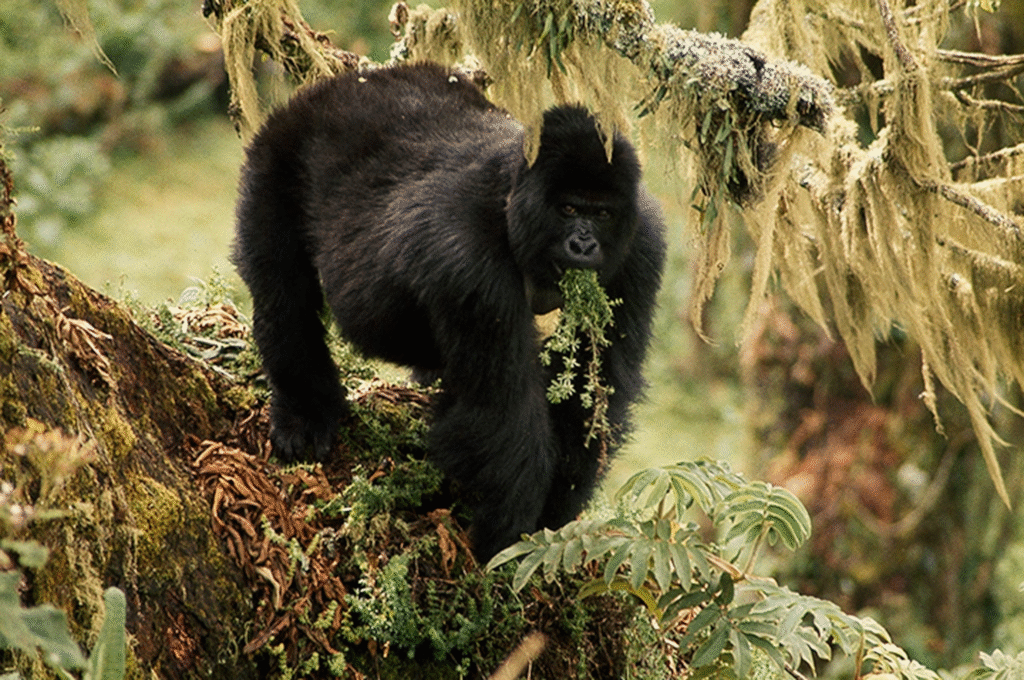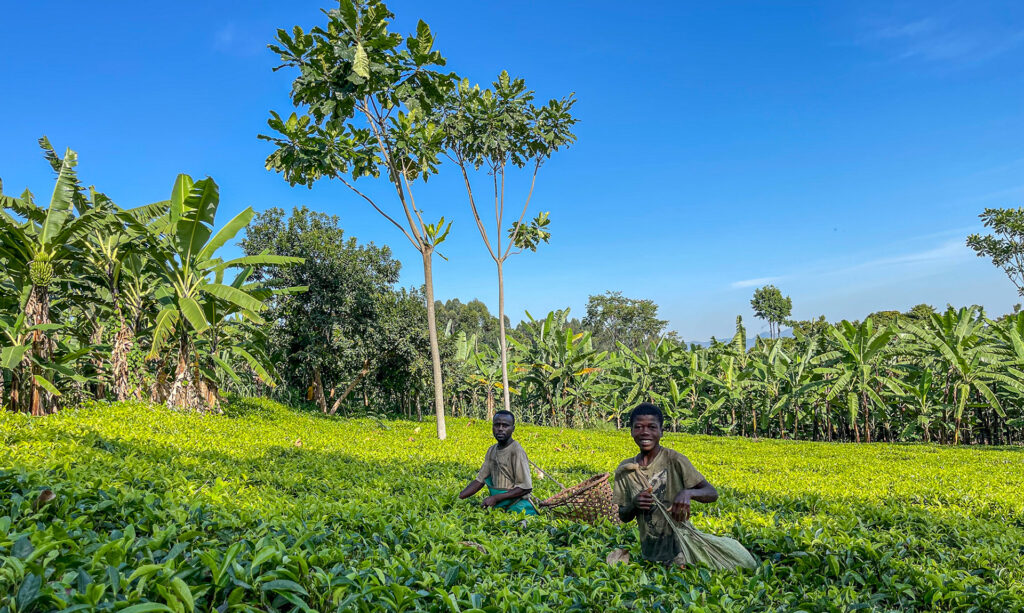Where the soul of the forest whispers in the mist
To walk alongside a mountain gorilla family in the high-altitude forests of Uganda is to witness one of nature’s most intimate social miracles. These families are not random wildlife sightings but complex, emotionally rich communities that mirror the same values we hold dear—protection, belonging, nurture, and love. In the dappled light of the forest canopy, infants cling to their mothers’ bellies, juveniles chase one another through tangled vines in joyous play, and soft vocal hums pass between members as they groom, feed, and rest together in moments of quiet peace. This is not the wild as we know it—it is a family home, built from ancient instincts and maintained by unspoken trust.
What makes these gorilla families so captivating is their extraordinary social awareness. They show joy in reunion, curiosity toward infants, deep bonds between siblings, and even a sense of mourning when one of their own disappears. Watching them interact, you’ll notice moments of eye contact, subtle gestures, and soothing sounds—an entire vocabulary that reveals a layered emotional world hidden in the heart of the jungle.
Mothers are often the silent strength of these groups, guiding the young with calm presence and endless patience, while adolescents challenge boundaries and find their place within the pecking order. Each family has a rhythm, a character, and a pulse that feels as real and nuanced as any human household.
Beyond the wonder and beauty, these gorilla families are a living testament to survival against the odds. Their forests were once under siege from deforestation and poaching, and though their numbers remain fragile, the return of new births and the resilience of established families show us what’s possible when conservation and community come together. As you stand just meters from them, it’s impossible not to feel the shared thread of connection—a reminder that, even deep in the wild, family is everything.
So lace up your boots, grab your camera, and prepare to meet the wild — this is where your gorilla trekking dreams and unforgettable safari adventures truly begin.
Truly Iconic Highlights in Uganda
Trek through Bwindi’s mystical rainforest and meet the endangered mountain gorillas in their breathtaking natural home.
Encounter mountain gorillas and golden monkeys on Mgahinga’s misty volcanic trails, where culture and alpine wildlife thrive together.
Unwind after your trek with a peaceful canoe ride across Lake Bunyonyi, Uganda’s most tranquil and scenic highland lake.
Enhance your gorilla trekking safari with an optional chimpanzee encounter in Uganda’s lush forests, adding depth and diversity to your primate adventure
Mountain Gorilla Families: Inside the Hidden Social World of Uganda’s Most Powerful Primates
When you step into the misty jungles of Bwindi Impenetrable Forest or the slopes of the Virunga Mountains in Mgahinga, you’re not just entering a national park—you’re entering the deeply bonded, emotionally rich world of mountain gorilla families. These aren’t just random groups of animals roaming the forest. They are tightly-knit units, deeply social, emotionally intelligent, and held together by loyalty, lineage, and survival. Each family has its own story, its own drama, and its own rhythm—woven with hierarchy, love, loss, and constant adaptation.
Mountain gorilla families are typically led by a dominant silverback—a male with a striking patch of silver hair across his back, symbolizing maturity and leadership. But what many travelers don’t realize is how complex this leadership role truly is. He is not just a protector; he’s a decision-maker, a father, a conflict mediator, and often the emotional core of the group. His strength may earn him respect, but it’s his ability to maintain peace, bond with females, and protect the young that truly defines his legacy. And should he grow old or fall, power often passes with tension and upheaval, sometimes leading to splinter groups forming—starting entirely new families deep in the forest.
The Social Tapestry: Mothers, Infants, and Blackbacks
At the heart of every family lies a delicate network of females, infants, juveniles, and younger males called blackbacks. The bond between a mother and her infant is one of the most emotionally moving things you can witness in the wild. She cradles her baby close to her chest, often humming soothing sounds that are as nurturing as any human lullaby. The young stay with their mothers for several years, learning everything from feeding habits to social cues, all within the safety net of their family.
Juveniles and adolescents bring energy and playfulness to the group. They tumble through the foliage, slap their chests in mock charge displays, and practice the skills they’ll one day need as adults. Meanwhile, blackbacks—those males who are no longer children but not yet dominant—navigate a quiet and complex journey of their own. Often walking slightly behind, watching, and waiting, they learn from the silverback, preparing for the day they may lead their own group. Sometimes, they stay. Sometimes, they disappear into the forest and re-emerge years later as silverbacks of entirely new families.
Each Family Has a Name, a History, and a Home
In Uganda, families are not anonymous. Researchers and conservationists have spent decades habituating select gorilla families for tourism and scientific monitoring. That means they know these groups intimately—names like Mubare, Habinyanja, Rushegura, and Nkuringo echo through gorilla trekking lore. Each family is observed daily, and their life stories are tracked like chapters in a living novel.
Take the Mubare family—the first to be habituated in Bwindi in the early 1990s. Over the years, this group has faced silverback succession, the deaths of beloved individuals, and new births that reignite hope. Or look at the Rushegura family, often known for being relaxed around humans and offering unforgettable encounters. Some families are large and dramatic, others small and intimate. Each varies in size—from just 5 to over 20 individuals—and in personality. Some are shy, retreating into the dense foliage at the first sound. Others stand confidently in the open, allowing visitors a deep look into their world.
What Gorilla Families Reveal About Our Own Humanity
Watching a mountain gorilla family interact is like peering into an ancient mirror. Their emotional intelligence is palpable—from how they console a distressed infant, to the way they mourn the death of a member, or gather protectively around a nursing mother. In these moments, the line between human and gorilla seems to blur. We are reminded that family, at its core, is not defined by language or culture, but by care, connection, and continuity.
It’s this emotional depth that makes a gorilla trek in Uganda unlike any other wildlife experience. You’re not merely watching animals in the wild. You are being granted a temporary visa into a community built on empathy, memory, and unspoken bonds. It’s why so many who come to trek the gorillas walk away not just with photographs, but with a changed perspective—often carrying a deeper appreciation for nature, family, and the fragile web of life that connects us all.
The Future of Gorilla Families Lies in Our Hands
Despite their strength and intelligence, mountain gorilla families remain one of the most endangered primate groups in the world. Thanks to conservation efforts, their numbers have slowly risen, with the latest estimates putting the total population above 1,000 individuals. But their survival is anything but guaranteed. Habitat loss, climate change, disease, and human encroachment still threaten their forests and the delicate structure of their families.
Each permit sold for gorilla trekking in Uganda helps fund conservation, anti-poaching patrols, and local community initiatives. So when you choose to visit, you’re not just meeting a gorilla family—you’re helping to protect it. You’re ensuring that young gorillas continue to grow up with their mothers, that silverbacks can pass on their wisdom, and that the forests echo with the chest-beating calls of juveniles for generations to come.
More Gorilla Trekking Information to Know.
Gorilla trekking goes far beyond just the hike — it’s a deep, emotional journey into the heart of Africa’s last wild rainforests. Knowing the right timing, permits, fitness tips, and park details can turn your experience from good to unforgettable.
In the Realm of Giants – Bwindi & Mgahinga in Frames.
Wander through an elegant gallery capturing Uganda’s most exclusive gorilla sanctuaries, where ancient forests cradle the last mountain gorillas in a world of mist, mystery, and majesty.
Essential Planning Tips for Visiting Uganda’s National Parks.
Get ready for the wild heart of Africa with expert travel tips on when to visit, what to pack, where to go, and how to make the most of your safari across Uganda’s breathtaking national parks.
Why Uganda for Gorilla Trekking?
Uganda is not just a destination — it's the very soul of gorilla trekking. With over half of the world’s remaining mountain gorillas calling its misty forests home, Uganda offers the rarest encounters in their most authentic setting. Here, your journey is not rushed or crowded. Instead, you’re guided by experienced rangers through pristine jungles where gorillas live as they always have — wild, free, and magnificent
From insider travel insights to unforgettable trekking guides, our blog is your trusted path into Uganda’s wild heart — connecting you with mountain gorillas, breathtaking landscapes, and the soul-stirring adventures that make this land unlike any other.






